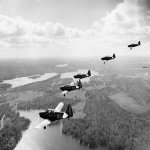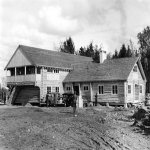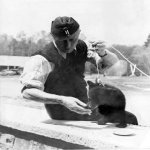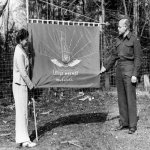More than 75 years ago, the Royal Norwegian Air Force (RNAF) came to Muskoka and for the duration of the Second World War made it their home.
On April 9, 1940, Nazi Germany attacked neutral Norway with overwhelming force. The tiny Norwegian armed forces had little hope of standing up to the invasion. King Haakon VII, his family, and members of the government fled the country to establish a government-in-exile in England.
Despite the fact that their country was occupied, the Norwegians made a substantial contribution to the Allied victory in 1945.
After the fall of Norway, only about 120 Norwegian air force personnel escaped to England so the decision was made for the air force to retrain and reform in Canada. The original numbers were pitifully small, but many new recruits came forward to join them; some had fled Norway, while others were expatriates residing in the United States and South America.
At first, the exiled Norwegians established themselves in Toronto at Toronto Island Airport, but after an accident that saw a Norwegian-piloted plane collide with the ferry Sam McBride a new home was decided.
In May 1942, the Norwegian air training program relocated to Muskoka Airport. The facilities grew to include three runways, hangars, and a collection of log buildings reminiscent of those found in Norway to house airmen and support their training. The cost was born by the huge Norwegian merchant marine, one of the largest in
the world.
The Norwegians also purchased a 430-acre recreational retreat east of Huntsville called Interlaken, now part of Limberlost. To the Norwegians, it was known as “Vesle Skaugum” or “Home in the Woods,” the name of the Norwegian King’s residence. This facility was used primarily for rest and basic training. Norwegians escaping from occupied Europe would arrive here to be strengthened physically with hiking and exercise, trained in the rudiments of military life, such as drills and marching, and given training in marksmanship and orienteering. They would then go on to advanced training at Little Norway, either as pilots or grounds crew.
Training continued in Muskoka until February 1945, at which time it was clear the war in Europe was in its final act and that Norway would soon be liberated. A total of 3,300 Norwegian officers, air crew and ground personnel had been trained at Little Norway. Over the course of the war, Norwegian air crews shot down more than 225 enemy fighters, while sinking six submarines. The contribution to victory was impressive, and could not have been made had the RNAF not had a facility to reform itself.
In 2007, a memorial dedicated to Little Norway was unveiled at Muskoka Airport. The memorial itself – an upright stone with a heritage plaque – stands outside the airport terminal. Within the building is a small but informative museum that includes a brief documentary film detailing the Little Norway story and the contributions made by the Royal Norwegian Air Force.
These contributions couldn’t have been made had Muskoka not embraced the exiled Norwegian airmen.



















































































